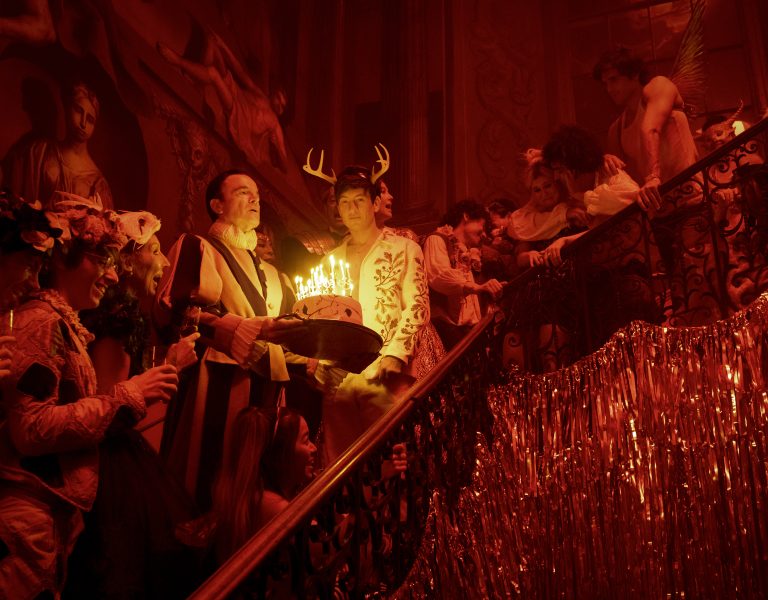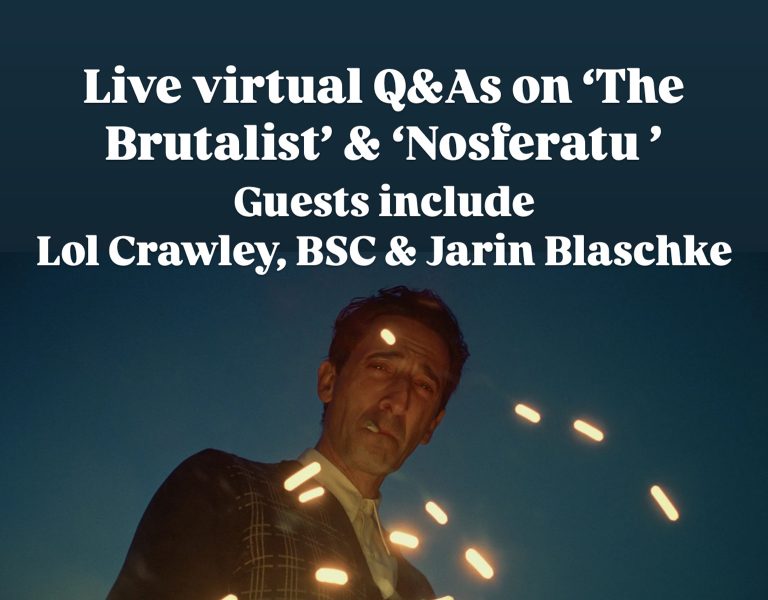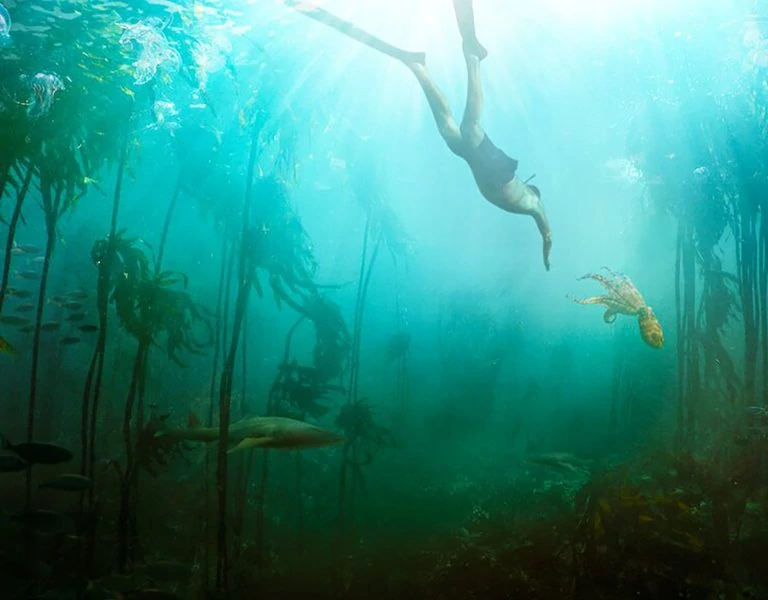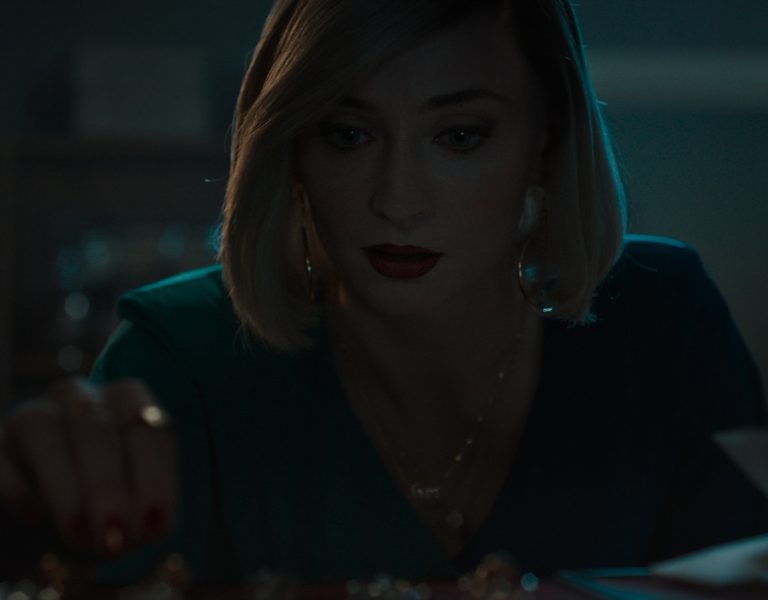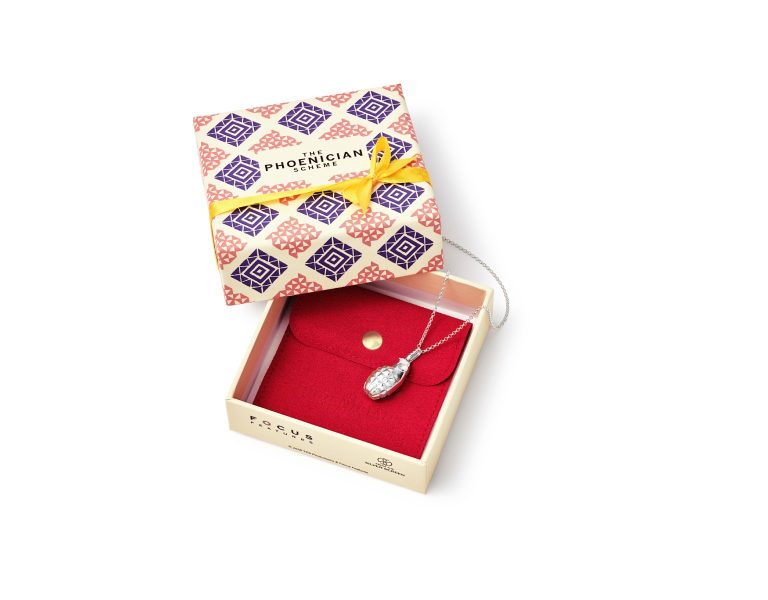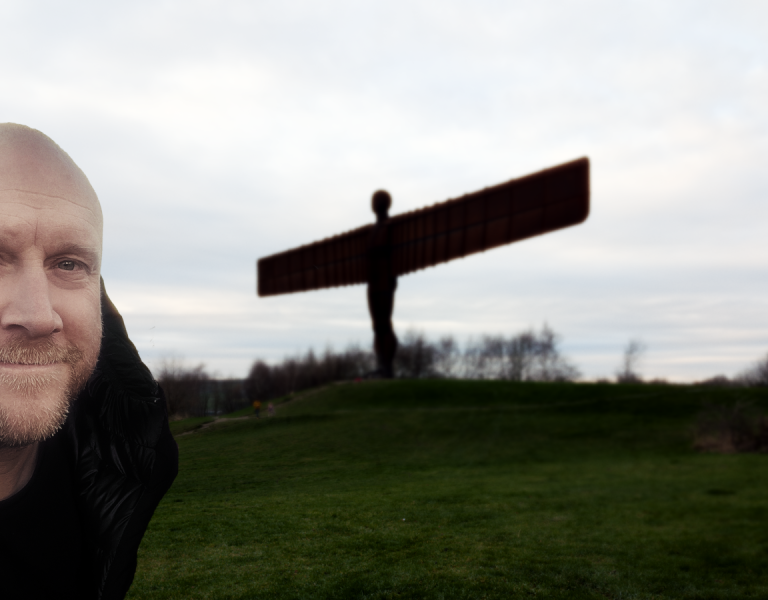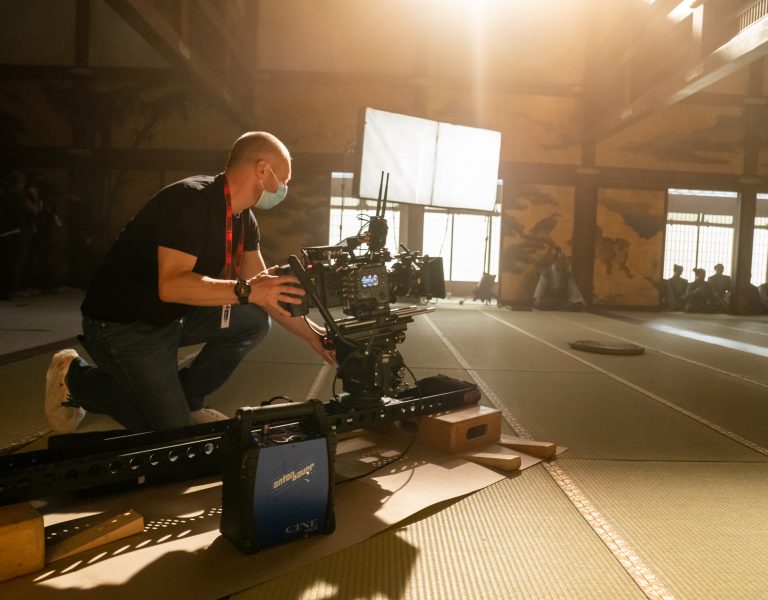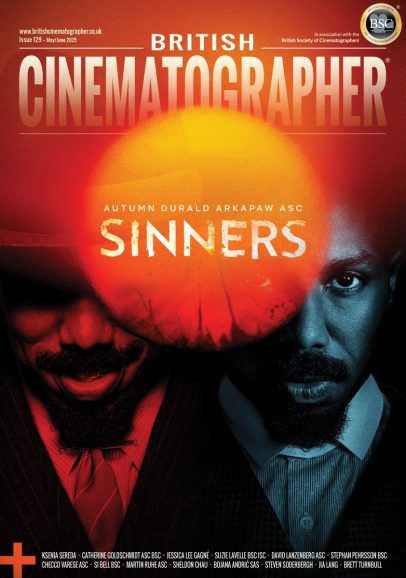LENSING IN THE FAST LANE
Azul Serra ABC, co-DP on Senna, shares his experiences of lensing Formula 1 driver Ayrton Senna’s pivotal Monaco 1984 race and combining, real footage, sequences shot on a volume, visual effects and archive footage to great effect.
From the outset, we knew we faced an extraordinary challenge. Ayrton Senna, celebrated as the King of Monaco and the King of Rain, achieved some of his most legendary victories on the streets of Monte Carlo and in torrential downpours with nearly non-existent visibility.
It was inevitable we would delve into the story of Monaco 1984 – a race that marked Senna’s meteoric rise. As a Formula 1 rookie, he stunned the world by climbing from 19th on the grid to finish second in relentless rain, only for the race to be halted prematurely by Jean-Marie Balestre.
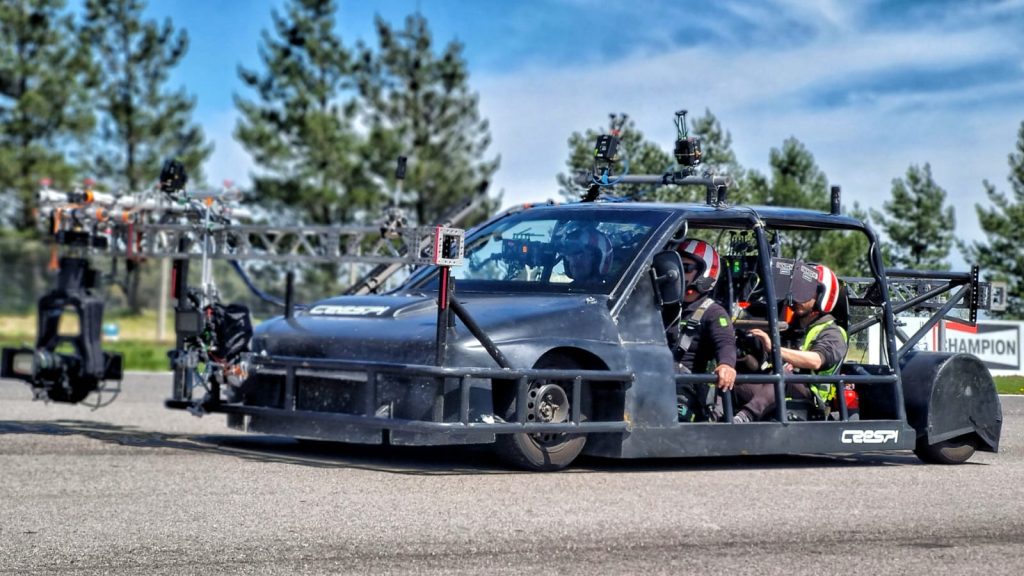
Recreating the pivotal event posed production challenges. Shutting down the streets of Monaco, importing period-accurate cars, transforming the city into its 1984 appearance, and replicating the overcast, rain-drenched conditions across such a vast area was unfeasible.
The solution lay in constructing the principal straight of the Monte Carlo circuit, the focal point of the narrative: the starting grid, team garages, commentary booth, and even the Prince’s royal box. After extensive scouting, we found a suitable location at an old airport parking lot in Montevideo, Uruguay, with a layout resembling Monaco’s main straight. Production designer Frederico Pinto ABC recreated the principality with painstaking attention to detail.
To conjure the race’s tempestuous atmosphere we devised a 2,000-square-metre canopy of black fabric, engineered with pulleys to allow sections to open and close to mimic the dark, dense overcast skies. Achieving this stormy atmosphere was critical as it the first Formula 1 race depicted in the series and one of the most celebrated moments in Senna’s career. The canopy, suspended by four cranes and six cherry pickers, provided the perfect foundation for our rain effects, complemented by a fleet of rain machines powered by multiple water trucks, delivering the relentless downpour.
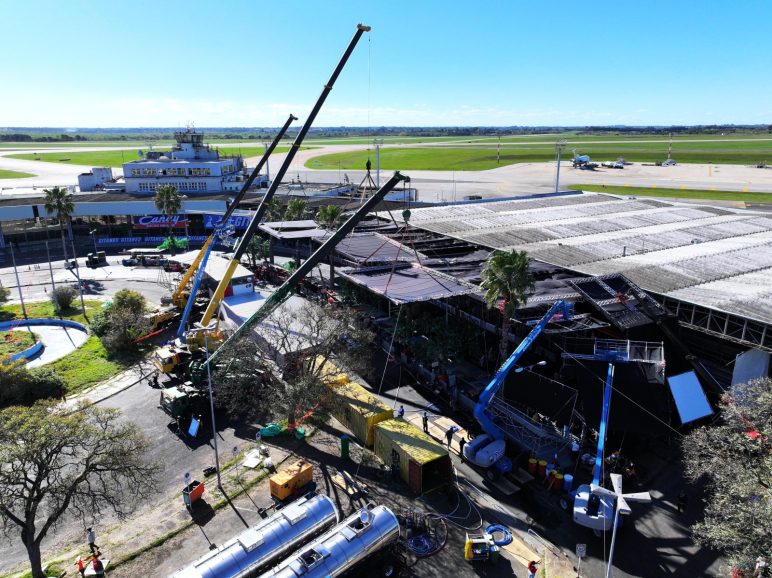
Creative combinations
Nine months preproduction preceded the six-month shoot to determine blocking and create pre vis. Co-creator, co-director and show runner, Vicente Amorim, pushed for the cinematographers – myself and Kaue Zilli (who mainly worked with co-director Julia Rezende) – and the visual effects team to be on board from the first day to ensure smooth integration.
Vicente and I wanted to shoot large format and achieve a bold image, finding a balance between a soft and beautiful depth of field to make the characters pop on screen but also allow as much of the background as possible to be visible. ARRI Alexa 35 captured dramatic parts of the story taking place off the race track and RED Raptors and Komodos captured racing sequences where camera weight, slow motion and ramping was important.
For the race sequences, we used vintage Canon FD [Full Frame still lenses introduced in 1971, rehoused by True Lens Services (TLS) with PL mounts] (14mm T2.9, 18mm T1.6, 24mm T1.5, 28mm T2.1, 35mm T1.5, 45mm T1.5, 55mm T1.3, 85mm T1.3, 100mm F2.1, 135mm T2.1). For the drama sequences, we used Canon K35 lenses, rehoused by TLS with PL mounts, and FD lenses to complete the K35 set (18mm T1.5, 24mm T1.5, 35mm T1.5, 55mm T1.3, 85mm T1.3). And Canon TLS lenses (45mm T1.5 (FD-X), 60mm T1.6 (Type SK), 100mm F2.1 (NFD), 135mm T2.1 (NFD), 300mm T2.8 (FD)).
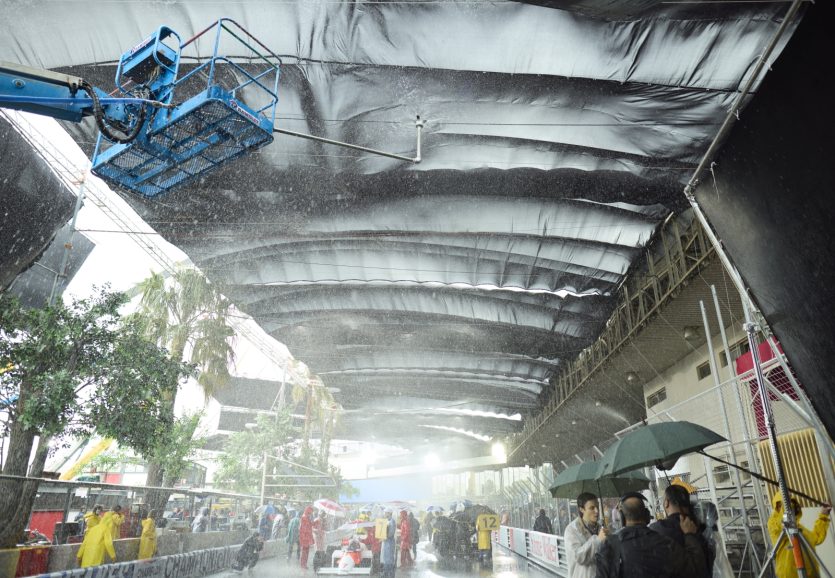
For specific emotional scenes, we used the Canon 50mm F0.95 “Dream Lens,” rehoused by TLS with an LPL mount. [This lens was originally introduced in 1961 for the Canon 7 rangefinder camera.] We also had zooms. The drama unit had Angénieux Optimo 24-290mm – PL Mount and Canon K-35 25-120mm – PL Mount. The racing/performance unit had ARRI 65-300mm T2.8 Signature Zooms with 1.7x Extender (ARRI LPL Mount), Fujinon Premista 28-100mm T2.9 Lens Kit with Chrosziel Drive Unit (PL Mount), Fujinon Premista 19-45mm T2.9 (PL Mount) and Angénieux Optimo Zoom 24-290mm – (PL Mount), with all kit supplied by Musitelli Film and Digital. I operated as I love to operate and also worked with Steadicam operator Ariel Schvartzman. The Drama Unit was operated by Ariel, me and Kaue Zilli (DP). The Race Performance Unit was operated mainly by Rodrigo Monte ABC and Cory Geryak.
The racing shots combined footage of live action stunt drivers, full CG, virtual production close-ups shot at Quanta in São Paulo and real archival footage. We built a car – we called the Mad Max Car – with the agility and height of a Formula 1 car and that we could rig a camera on and could support crew including camera operator and focus puller. We created a bible of research showing ways we could rig cameras in a car or shots we could film from a camera car.
Senna wears a yellow helmet, only revealing his eyes, so we studied how to create emotion, tension and an immersive experience, focusing on his eyes and cutting between different types of shots.
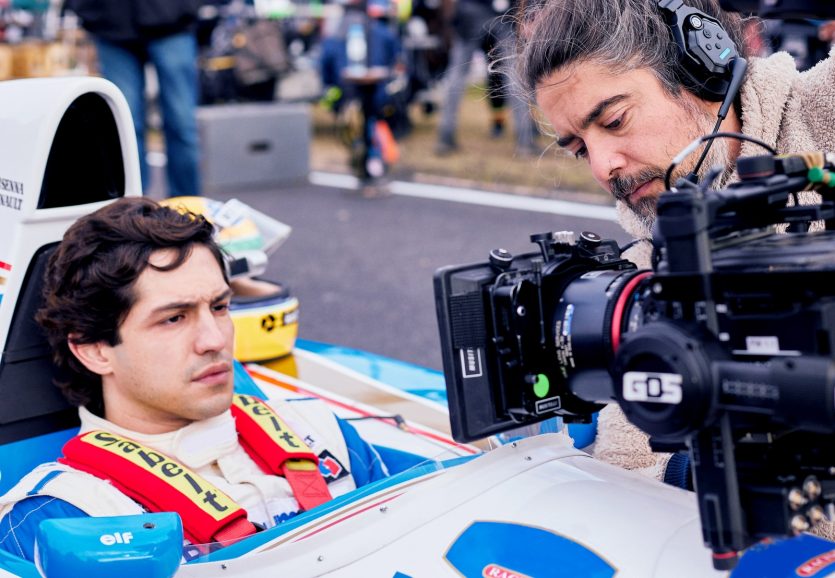
As it was impossible to film the Monaco race because the track is completely different now and it would have been difficult and expensive to recreate the rainy conditions, from the beginning, we knew all wide shots and of cars traveling in the race would be VFX. Visual effects producer and supervisor Marcelo Siqueira and Eyeline Studios visual effects team worked closely with us during previs, sending us stages of the VFX so we could ensure images did not look too perfect which would be unrealistic.
Our main virtual production challenge was combining the LED walls with pouring rain. We built a pool inside our stage and covered our screens in plastic. Working with a volume of this size was new for the crew so Cory Geryak – an amazing DP, second unit director and former gaffer – took charge of the volume shoot. During the months prep on the volume I learnt you need to be aware of colour sensitivity and height as a small adjustment of screen or car height changes everything. Brightness and how much the foreground and background matches reflections was also key, especially working with a shiny helmet and car.

